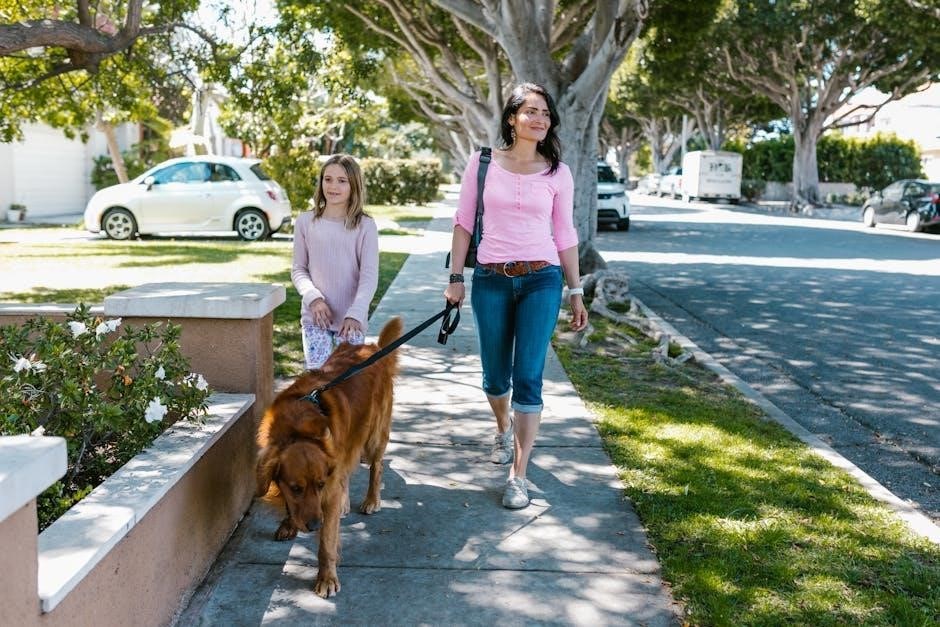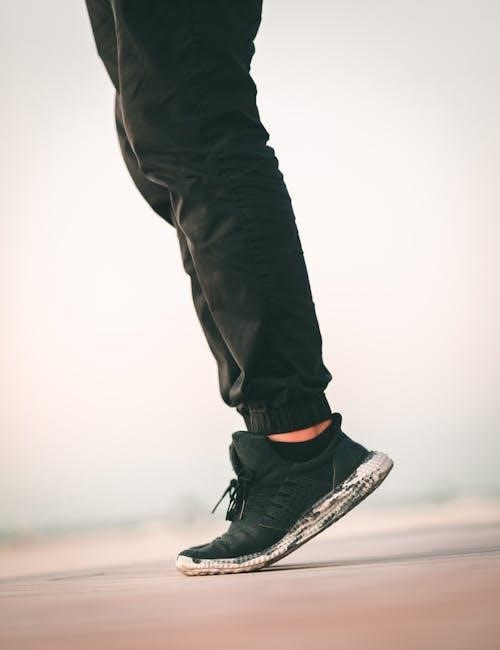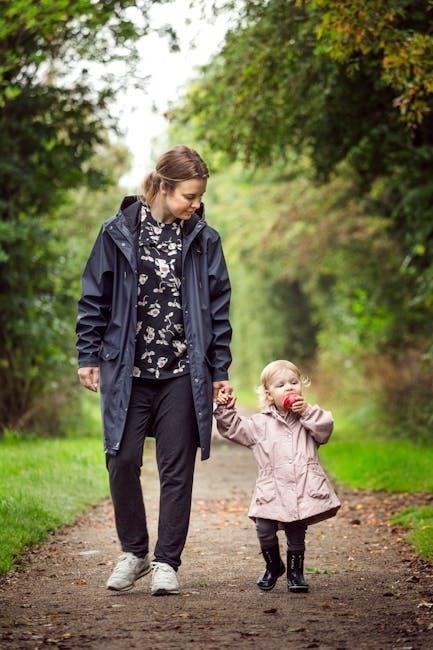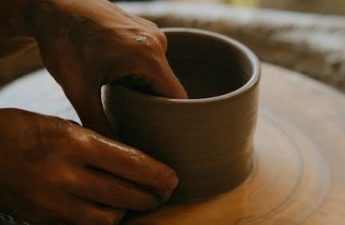Tiptoe walking‚ common in toddlers‚ typically resolves by age 2․ Exercises promote muscle development and balance․ Printable PDF guides offer structured routines for home practice․
Understanding Toe Walking and Its Implications
Tiptoe walking‚ or toe walking‚ is a common phenomenon in toddlers‚ often resolving spontaneously by age 2 or 3․ However‚ persistent toe walking can indicate muscle imbalances or neurological factors․ It may lead to tight calf muscles‚ gait abnormalities‚ and discomfort during walking․ Idiopathic toe walking refers to cases with no identifiable medical cause‚ yet it still requires attention to prevent long-term issues․ Understanding the underlying causes and implications is crucial for implementing effective exercises and interventions․ Printable PDF guides provide comprehensive routines to address toe walking and promote normal gait development․
Why Toe Walking Exercises Are Important
Tiptoe walking exercises are essential for addressing muscle imbalances and promoting proper gait development․ Strengthening and stretching exercises help improve ankle mobility‚ reduce muscle tightness‚ and enhance overall coordination․ Persistent toe walking can lead to discomfort‚ poor posture‚ and long-term orthopedic issues if left unaddressed․ Regular exercises guide the body toward a heel-to-toe walking pattern‚ fostering natural movement and stability․ Printable PDF guides provide structured routines‚ making it easier for parents and caregivers to support their child’s progress effectively․

Stretching Exercises for Toe Walking
Stretching improves flexibility and reduces muscle tightness‚ promoting a heel-to-toe gait․ Calf and gastrocnemius stretches are key‚ with PDF guides offering detailed routines for effective practice․
Calf Stretch for Improved Ankle Mobility
The calf stretch is a foundational exercise to address toe walking by improving ankle mobility and reducing muscle tightness․ Stand facing a wall with one hand on it for balance; Step one foot back about a foot‚ keeping the heel on the ground and bending the front knee․ Hold for 30 seconds‚ then switch legs․ This stretch targets the calf muscles‚ promoting a more natural heel-to-toe walking pattern․ Regular practice‚ as outlined in PDF guides‚ can enhance flexibility and gait mechanics‚ making it easier for children to walk flat-footed․
Gastrocnemius Stretch to Reduce Toe Curling
The gastrocnemius stretch targets the muscle responsible for toe curling‚ helping to reduce toe walking․ Stand in a walking position‚ with one hand on a wall for support․ Bend the knee of the leg you’re stretching‚ keeping the foot flexed and the heel on the ground․ Lean forward slightly until a stretch is felt in the back of the leg․ Hold for 30 seconds and repeat 3 times per day․ This exercise improves Achilles tendon flexibility and reduces muscle tightness‚ making it easier to walk with a heel-to-toe pattern; Printable PDF guides provide detailed visuals for proper form․

Strengthening Exercises
Strengthening exercises target foot muscles to reduce toe walking․ Activities like toe basketball and heel raises against resistance build muscle strength‚ improving gait and heel-to-toe walking patterns․
Toe Basketball: Targeting Small Foot Muscles
Toe basketball is a fun and effective exercise that strengthens the small muscles of the feet․ Children pick up small objects‚ like pompoms‚ with their toes and place them into a cup․ This activity mimics the motion of basketball‚ making it engaging․ It works the intrinsic foot muscles‚ improving toe control and gait․ Perform 10-15 repetitions‚ 3 sets‚ 2-3 times daily․ Over time‚ this exercise helps reduce toe walking by enhancing muscle strength and coordination; It’s a simple yet impactful way to promote heel-to-toe walking patterns in children․
Heel Raises Against Resistance
Heel raises against resistance strengthen the muscles responsible for proper gait․ Use a resistance band around the feet‚ anchored to a sturdy object․ Slowly raise the heels‚ keeping knees straight‚ then lower․ Perform 3 sets of 10-15 repetitions‚ 3 times daily․ This exercise targets the calf and shin muscles‚ improving ankle mobility and reducing toe walking․ Over time‚ it helps establish a more natural heel-to-toe walking pattern‚ enhancing overall lower limb strength and coordination․ Consistency is key for long-term improvement․
Balance and Coordination Activities
Engage in activities like walking backwards‚ single-leg stance‚ and heel-to-toe walking to improve balance․ These exercises enhance stability and coordination‚ reducing toe walking patterns over time․
Walking Backwards with Proper Posture
Walking backwards with proper posture is an effective exercise to reduce toe walking․ Stand tall‚ engage your core‚ and take slow‚ deliberate steps․ Use a wall or chair for support if needed․ Focus on placing your heel first‚ then rolling to your toe․ This activity strengthens the muscles in your feet and legs while improving balance․ Perform 10 steps‚ 2-3 times daily․ Over time‚ this helps transition to a more natural heel-to-toe walking pattern․
Single-Leg Stance for Stability
Stand on one leg while keeping the other foot lifted off the ground․ Hold for 10-15 seconds‚ then switch legs․ This exercise enhances balance and stability‚ reducing reliance on toe walking․ Focus on maintaining proper posture with a straight spine and engage your core for better control․ Perform 2-3 sets on each leg‚ twice daily․ Over time‚ this activity strengthens the muscles in your feet and ankles‚ promoting a more stable and natural walking pattern․ Use a wall or chair for support if needed to ensure safety and confidence during practice․

Home Program for Toe Walking
A daily routine incorporating stretching‚ strengthening‚ and balance exercises can help reduce toe walking․ Printable PDF guides provide structured‚ easy-to-follow instructions for consistent practice at home․
Creating a Daily Routine
A consistent daily routine is essential for addressing toe walking․ Start with 10-15 minute sessions‚ 3 times a day‚ including stretching‚ strengthening‚ and balance activities․ Warm-up with gentle movements‚ followed by exercises like calf stretches and toe lifts․ Incorporate fun activities‚ such as toe basketball‚ to engage children․ Gradually increase intensity and duration as progress is observed․ Track improvements in balance‚ heel-to-toe walking‚ and muscle strength․ Printable PDF guides provide structured schedules and visual instructions‚ making it easier for parents to follow and maintain consistency at home․
Monitoring Progress and Adjustments
Regularly tracking a child’s progress is crucial for effective toe walking exercises․ Record improvements in heel-to-toe walking‚ balance‚ and muscle strength weekly․ Use tools like gait observation scales or video recordings to assess changes objectively․ If progress stalls‚ adjust the exercise routine by increasing repetitions‚ intensity‚ or adding new challenges․ Consult a physiotherapist to refine the program based on individual needs․ Printable PDF guides often include progress charts to help parents and caregivers stay organized and motivated․ Consistent monitoring ensures the routine remains effective and tailored to the child’s development․
Additional Tips for Parents and Caregivers
Encourage consistent practice and use supportive footwear․ Provide verbal cues like “heels down” and praise progress to motivate your child․ Positive reinforcement enhances engagement and results․

Encouraging Heel-to-Toe Walking
Encourage heel-to-toe walking by incorporating tactile activities and verbal cues․ Use supportive footwear like firm boots to promote proper gait․ Place stickers or tape on the floor to guide heel strikes․ Practice walking backward and forward on flat surfaces․ Incorporate games‚ such as “heel-to-toe marching‚” to make practice engaging․ Positive reinforcement‚ like praise‚ can motivate consistent effort․ For younger children‚ consider using a balance beam or straight line on the floor as a visual guide․ Regular practice improves muscle memory and helps transition from toe walking to a more natural gait pattern over time․
Using Positive Reinforcement

Positive reinforcement is a powerful tool to encourage heel-to-toe walking․ Praise your child when they walk correctly‚ using specific verbal cues like “great job!” or “well done!” Reward small achievements with stickers‚ stars‚ or fun activities to motivate consistency․ Create a simple reward chart to track progress visually․ Celebrate efforts‚ not just successes‚ to build confidence․ Consistent encouragement helps children associate heel-to-toe walking with positive outcomes‚ fostering perseverance and gradual improvement in their gait pattern over time․
When to Seek Professional Help
Consult a physiotherapist if your child experiences pain‚ persistent toe walking beyond age 3‚ or difficulty with heel-to-toe gait‚ to address potential underlying issues early․
Signs That Indicate the Need for Physiotherapy

If your child experiences persistent toe walking beyond age 3‚ difficulty with heel-to-toe gait‚ or shows signs of muscle fatigue‚ pain‚ or balance issues‚ seek professional help․ Persistent toe curling‚ knee rotation‚ or psychological tension during walking may also signal the need for physiotherapy․ A physiotherapist can assess gait patterns and provide targeted exercises to address underlying muscle imbalances or structural issues․ Early intervention ensures proper development and prevents long-term mobility challenges․ Consult a physiotherapist if home exercises alone do not improve walking patterns․
Toe walking exercises are effective for improving gait and balance․ Printable PDF guides provide structured routines and resources for continued progress and support․
Printable PDF Guides for Toe Walking Exercises
Printable PDF guides offer structured routines for toe walking exercises‚ making them easy to follow at home․ These guides include detailed instructions‚ illustrations‚ and progress trackers to help individuals or parents monitor improvement․ They often cover stretching‚ strengthening‚ and balance activities‚ ensuring a comprehensive approach to addressing toe walking․ Many guides are designed for children‚ incorporating fun and engaging exercises․ Downloadable resources provide convenience and accessibility‚ allowing consistent practice and positive outcomes․ Always consult a healthcare professional before starting any new exercise program to ensure safety and effectiveness․



